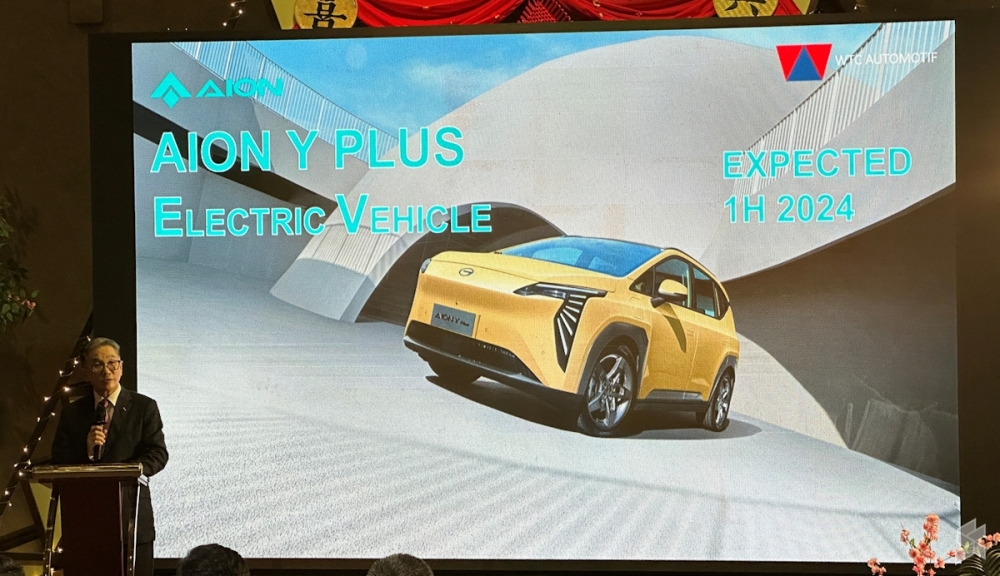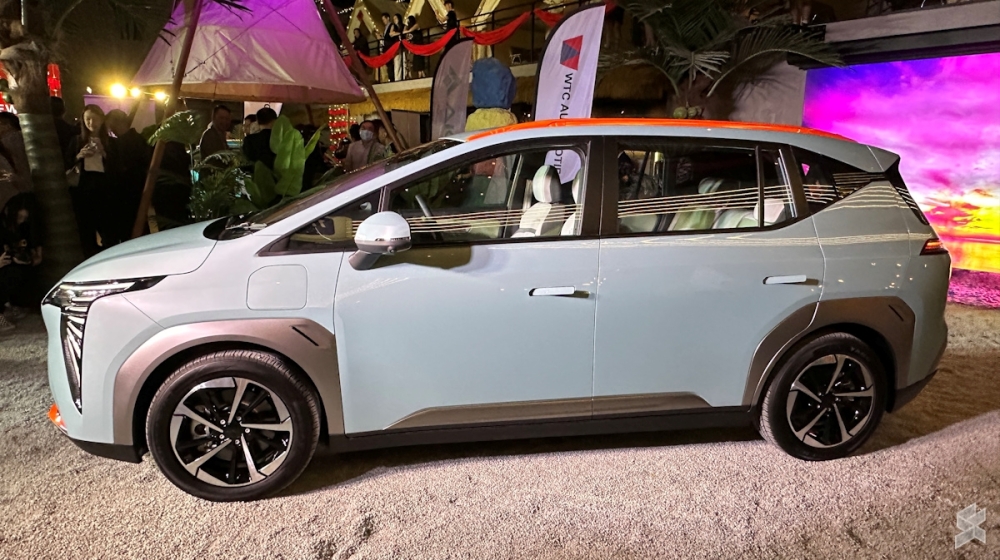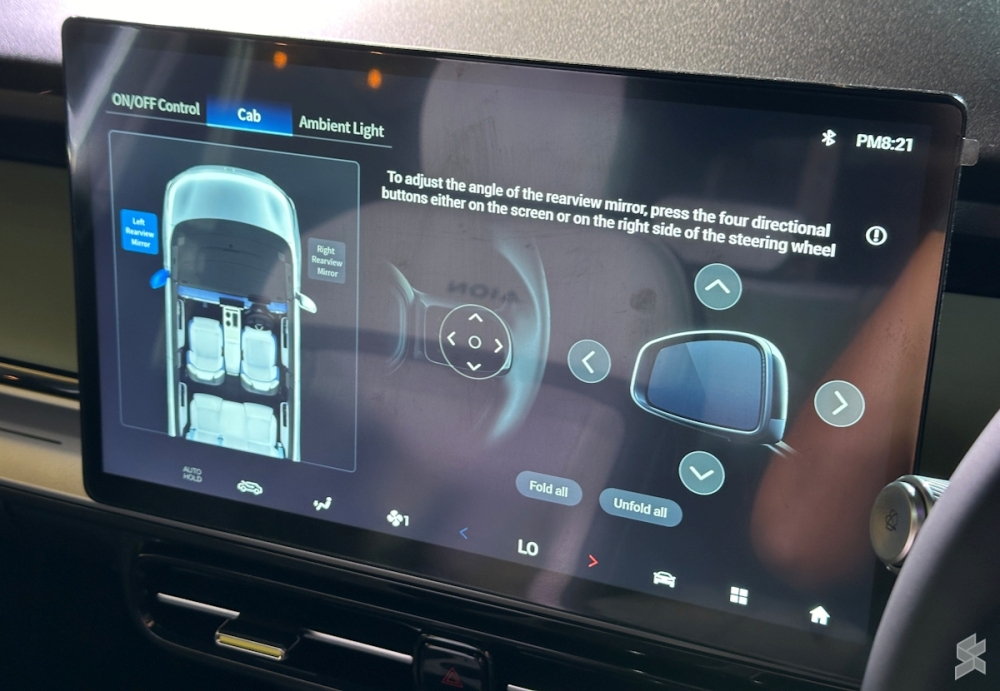KUALA LUMPUR, Feb 3 — After experiencing great growth in 2023, the electric vehicle market in Malaysia will be welcoming not only new models but also fresh new players in 2024. One of them is the GAC Aion which will be making its debut in our market later this year with this rather funky-looking release: the GAC Aion Y Plus.
Before we move on, do note that GAC Aion and its distributor in Malaysia, WTC Automotif (WTCA) have not yet announced the full specifications for the Aion Y Plus variant that will be released into our market. They did provide some early information about it though, so let’s start with that.
GAC Aion Y Plus Malaysia: What we know so far
During the press preview event earlier this week, WTCA said that the Malaysia-bound Aion Y Plus will feature a 63.2kWh lithium iron phosphate (LFP) battery pack and can deliver a WLTP-rated range of 430km.
In addition to that, the Malaysian variant of Aion Y Plus will also come with a 150kW (201hp) electric motor. No performance numbers were mentioned at the event but based on the specs sheet from GAC Aion Thailand, the Malaysian unit should be identical to the 490 Elite or 490 Premium variants that are currently on sale over there.

If that’s the case, then the electric motor on the Malaysian variant should also be able to produce 225Nm of torque and can go from 0-100km/h in 8.5 seconds. Similarly, expect the Aion Y Plus to feature a 7kW onboard AC charger and DC fast charging support of up to 80kW alongside Vehicle to Load (V2L) capability of up to 3.3kW.
Is Aion Y Plus a SUV or MPV?

Right from the get-go, there’s something about the exterior of this EV that strikes me. It has been described as a compact crossover SUV but to me, the general shape of Aion Y Plus looked like an MPV instead.
From a certain angle, this EV even reminds me of the Mitsubishi Xpander but with a smaller physique and shorter footprint. Perhaps, maybe it is fair to call the Aion Y Plus a mini-MPV?
Aion Y Plus has ample space to become a family EV
Labels aside, it is quite pleasing to see that the Aion Y Plus offers significant legroom for rear passengers. In addition to that, the opening angle of the rear doors is almost 90 degrees which makes it easier to go in and out of the car or put in sizeable items into the EV.
Not to forget, there’s also a huge space in the boot area. These characteristics can potentially attract those who are looking to obtain an EV as a family car which is rather interesting given how the Aion y Plus is being targeted towards the younger segment of the market.
Tastefully designed interior with great build quality
With the funky exterior, I was expecting the Aion Y Plus to come with a bombastic interior. To my surprise, that is not the case at all.
Instead, it features modern and sleek lines that are subtle yet tasteful. In addition to that, the dual-tone colourway added a dash of life to it.
The build quality is also top-notch as I didn’t spot any rough edges within the car’s door panels, dashboard, or steering wheel.
Where are the physical control buttons?

I don’t know if GAC Aion took some inspiration from Tesla while designing the Aion Y Plus but the company decided to not use physical control buttons for the EV’s side mirrors. Instead, you can only adjust them through the car’s infotainment system.
You can either tap on the centre touchscreen (which is rather huge for a car at 14.6-inch) or use the directional buttons on the left side of the steering wheel. Aion Y Plus’ climate control has also been digitalised although this is starting to become common, especially among EVs.
While we are still in the subject of Aion Y Plus’ infotainment system, I find its user interface aesthetically pleasing. The unit that was present at the media preview was only pre-loaded with apps that are essential to the car, so I managed to find my way through the system rather quickly.
That being said, there seems to be a slight lag in sections that are more graphics-intensive especially those that feature the 3D representation of the EV. Of course, this is not to the point of unusable or annoying.
Meanwhile, not everything about Aion Y Plus has been digitalized. For example, the windows on the EV can still be controlled using physical switches while the same also applies to its driving modes, signals, lights, and wipers which are accessible via the two steering wheel stalks.
Other interesting quirks about Aion Y Plus
Despite having only a brief time with the new EV, I still noticed several things that were absent from the unit that was shown at the event. Once again, it is not yet known for now whether all of these features will still be missing in the Malaysian variant but here’s the list for your reference:
- This EV has no frunk.
- Its steering wheel has tilting adjustment but no telescoping which means you can only move it up and down but can’t change its length.
- The front passenger seat does not come with electric controls.
- No centre armrest for the rear passengers.
- There is no cargo cover for its boot although I did notice there are already pre-made mountings which seem to suggest that you can fit an aftermarket cover.
- No wiper for the rear windscreen.
Interestingly enough, this unit has a spare tyre which is quite a sight to see given that many cars these days don’t come with a spare tyre anymore.
Can GAC Aion Y Plus be a formidable rival against BYD Atto 3 and the likes?
Given its 150kW (201hp) electric motor, and 430km of WLTP-rated range, Aion Y Plus will go head-to-head against the most popular EV in Malaysia at the moment, the BYD Atto 3. Not only that, the GAC Aion debut model for Malaysia also has to face the Chery Omoda E5 that will be launched here very soon and has similar performance as well as range.
As a quick comparison, let’s look at the dimensions and wheelbase measurements of all three EVs:
- GAC Aion Y Plus: 4,535mm (left) x 1,870mm (W), 1,650mm (H) / 2,750mm (wheelbase)
- BYD Atto 3: 4,455mm x 1,875mm x 1,615mm / 2,720 mm
- Chery Omoda E5: 4,400mm x 1,830mm x 1,588mm / 2,630mm
On paper, it looks like the Aion Y Plus has a slightly longer and taller body than its two competitors. This is probably why the EV can provide sizeable legroom and boot space, which are certainly some of the Aion Y Plus’ strong points.
Over in Thailand, the Aion Y Plus 490 Elite is currently being sold for THB899,900 (~RM119,573) while the slightly higher-end 490 Premium is priced at THB995,900 (~RM132,328). Based on this pricing, I predict that the Aion Y Plus will be available in Malaysia for less than RM160,000.
As a comparison, the current on-the-road (OTR) pricing for the BYD Atto 3 Standard Range is around RM150,430 while the Extended Range version can be obtained for RM168,430. However, I don’t think these price tags will be around for long though.
Consider this: by the time the Aion Y Plus (and also Omoda E5) arrived in Malaysia, the Atto 3 had already been in Malaysia for more than a year. With two interesting competitions heading its way, I doubt Sime Darby Motors and BYD would leave Atto 3 to defend itself just like that.
Of course, it is still too early to give a proper verdict to the Aion Y Plus at this juncture. Don’t forget that we also still need to get behind its wheels and have a real-life driving experience with the EV on Malaysian roads. — SoyaCincau






















